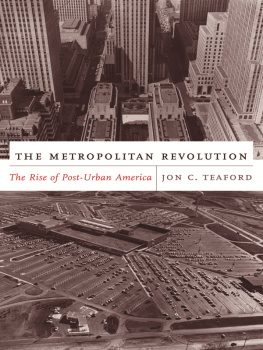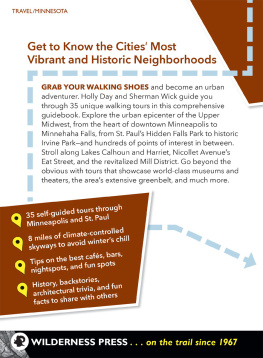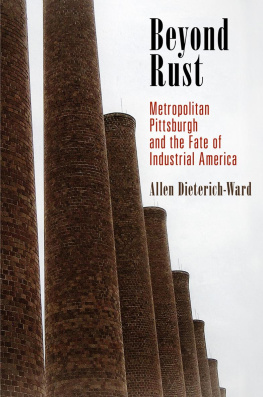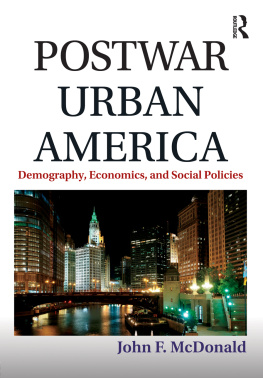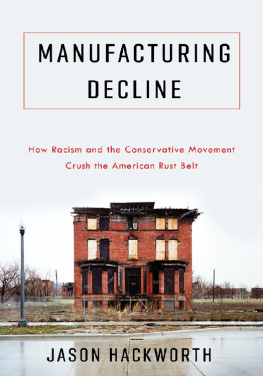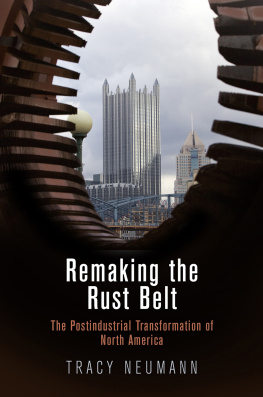THE METROPOLITAN REVOLUTION
THE COLUMBIA HISTORY OF URBAN LIFE
The Columbia History of Urban Life
Kenneth T. Jackson, General Editor
Deborah Dash Moore, At Home in America: Second Generation New York Jews 1981
Edward K. Spann, The New Metropolis: New York City, 18401857 1981
Matthew Edel, Elliott D. Sclar, and Daniel Luria, Shaky Palaces: Homeownership and Social Mobility in Bostons Suburbanization 1984
Steven J. Ross, Workers on the Edge: Work, Leisure, and Politics in Industrializing Cincinnati, 17881890 1985
Andrew Lees, Cities Perceived: Urban Society in European and American Thought, 18201940 1985
R. J. R. Kirkby, Urbanization in China: Town and Country in a Developing Economy, 19492000 A.D. 1985
Judith Ann Trolander, Professionalism and Social Change: From the Settlement House Movement to Neighborhood Centers, 1886 to the Present 1987
Marc A. Weiss, The Rise of the Community Builders: The American Real Estate Industry and Urban Land Planning 1987
Jacqueline Leavitt and Susan Saegert, From Abandonment to Hope: Community-Households in Harlem 1990
Richard Plunz, A History of Housing in New York City: Dwelling Type and Social Change in the American Metropolis 1990
David Hamer, New Towns in the New World: Images and Perceptions of the Nineteenth-Century Urban Frontier 1990
Andrew Heinze, Adapting to Abundance: Jewish Immigrants, Mass Consumption, and the Search for American Identity 1990
Chris McNickle, To Be Mayor of New York: Ethnic Politics in the City 1993
Clay McShane, Down the Asphalt Path: The Automobile and the American City 1994
Clarence Taylor, The Black Churches of Brooklyn 1994
Frederick Binder and David Reimers, All the Nations Under Heaven: A Racial and Ethnic History of New York City 1995
Clarence Taylor, Knocking at Our Own Door: Milton A. Galamison and the Struggle to Integrate New York City Schools 1997
Andrew S. Dolkart, Morningside Heights: A History of Its Architecture and Development 1998
Jared N. Day, Urban Castles: Tenement Housing and Landlord Activism in New York City, 18901943 1999
Craig Steven Wilder, A Covenant with Color: Race and Social Power in Brooklyn 2000
A Scott Henderson, Housing and the Democratic Ideal 2000
Howard B. Rock and Deborah Dash Moore, Cityscapes: A History of New York in Images 2001
Jameson W. Doig, Empire on the Hudson: Entrepreneurial Vision and Political Power at the Port of New York Authority 2001
Lawrence Kaplan and Carol P. Kaplan, Between Ocean and City: The Transformation of Rockaway, New York 2003
Franois Weil, A History of New York 2004
Evelyn Gonzalez, The Bronx 2004
 | THE METROPOLITAN REVOLUTION The Rise of Post-Urban America Jon C. Teaford Columbia University Press New York |

Columbia University Press
Publishers Since 1893
New York Chichester, West Sussex
cup.columbia.edu
Copyright 2006 Columbia University Press
All rights reserved
E-ISBN 978-0-231-51093-6
Library of Congress Cataloging-in-Publication Data Teaford, Jon C.
The metropolitan revolution : the rise of post-urban America / Jon C. Teaford.
p. cm.(The Columbia history of urban life)
Includes bibliographical references and index.
ISBN 0-231-13372-3 (cloth : alk. paper)
ISBN 0-231-13373-1 (pbk. : alk. paper)
1. Metropolitan areasUnited StatesHistory20th century. 2. Cities and townsUnited StatesHistory20th century. I. Title.
HT334.U5T4 2006
307.7640973dc22
2005034053
A Columbia University Press E-book
CUP would be pleased to hear about your reading experience with this e-book at .
 | Contents |
We are on the threshold of a crucial era of change in the urban way of life, wrote the respected architect-planner Henry S. Churchill in 1945. Vast disintegrating and destructive forces are loose on the world, he observed, causing Americans to seek new physical urban settings as well as new social and economic patterns. Although his vision of the future was not perfect, Churchills sense of impending radical change proved prescient. The American city was indeed on the brink of a revolution that would transform the metropolis and the lifestyle of the nations residents. During the following half century, traditional notions of the city would become obsolete, and concepts standard to the understanding of urban areas would grow increasingly outmoded. By 2000 changes in metropolitan life would draw into question the meaning of such terms as urban and suburban, as language and notions appropriate to the world of Henry Churchill seemed to fall short of explaining the new reality.
In 1945 the United States was an urban nation, dominated by clearly defined urban places with an anatomy familiar and comprehensible to experts like Churchill as well as city dwellers in general. The metropolis was a place with readily discernible edges, its lifestyle sharply distinguished from that of the rural rubes and hicks, many of whom had obtained the benefits of electricity only a decade before. Cities were in the nations vanguard, enjoying the latest technology and defining the cutting edge in fashion and culture. They were the centers of commerce, manufacturing, entertainment, and intellect where the luckiest Americans made and spent their fortunes. Manhattan and Chicago were magnets attracting the ambitious and adventurous, those who sought to get ahead and enjoy the best in life. The vast expanses beyond metropolitan America were the sticks, the home of those who remained behind.
At the core of each of these urban places was a single central business district, the undisputed focus of the metropolitan area. Although segregated by socioeconomic class in different residential zones, all metropolitan Americans recognized the downtown as the center of urban life. It was the unquestioned hub of finance, retailing, office employment, government, and transportation, and Americans viewed the metropolis as radiating from this single preeminent center. Each metropolis had one dominant heart marked by bustling crowds and soaring skyscrapers that was perceived as essential to the urban areas continued existence.
Metropolitan Americans not only perceived a single dominant focus for urban life, but also shared common space. The realities of urban existence forced the diverse elements of the populace to come into contact; it was difficult to escape the various fragments of the metropolitan mosaic. Because of rationing of gasoline and tires during World War II and because few families had more than one automobile, residents relied heavily on public transit. Middle-class men commuted to work on buses or streetcars that passed from middle-class neighborhoods through blue-collar districts, taking on working-class passengers, to the downtown area, a destination for residents from throughout the metropolis. Likewise, middle-class women shoppers traveled to downtown department stores by means of public transit, moving slowly through the various social zones of the city. On reaching downtown, they shared the sidewalks with businessmen, panhandlers, and working-class shoppers.
Next page
